7 Proven Home Remedies That Can Help Your Arthritic Dog Move Better Again
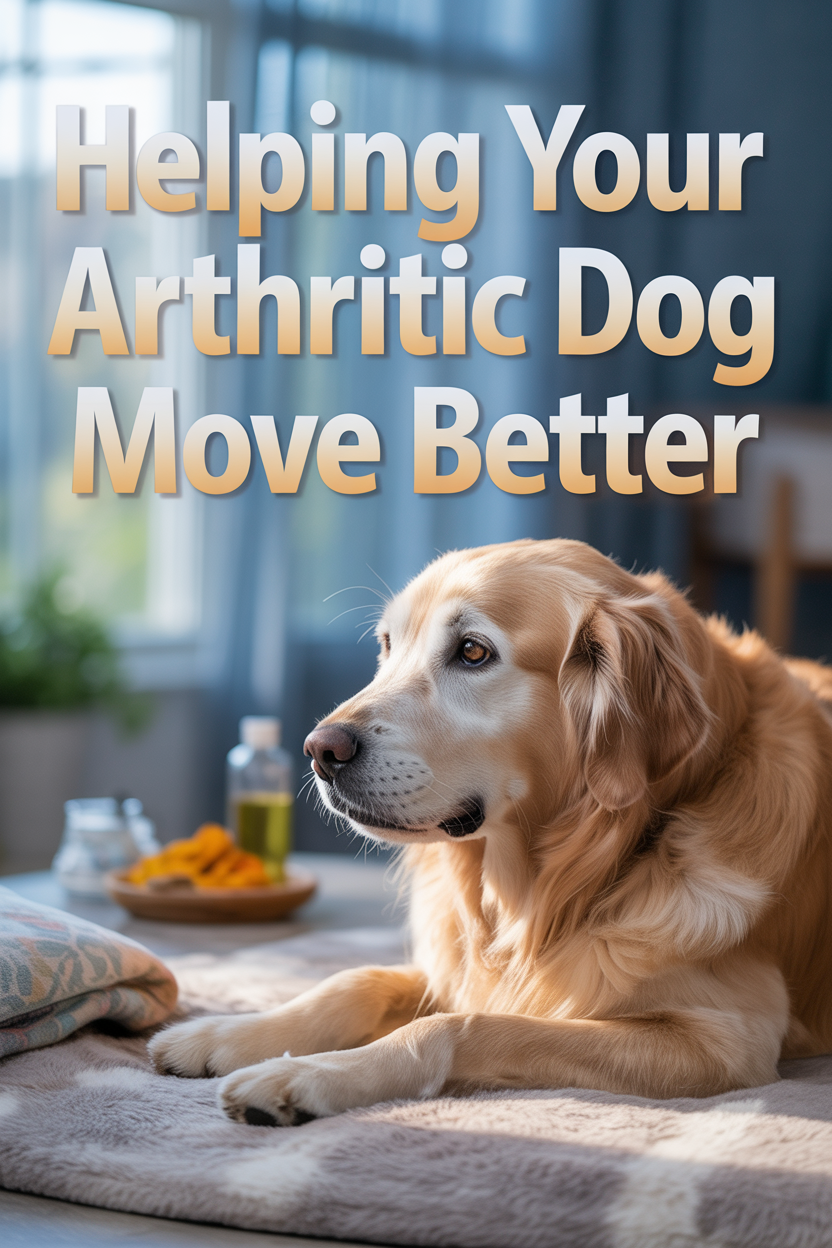
Ouch, My Paws! Understanding Canine Arthritis When Your Furry Friend Starts Walking Like Your Grandpa
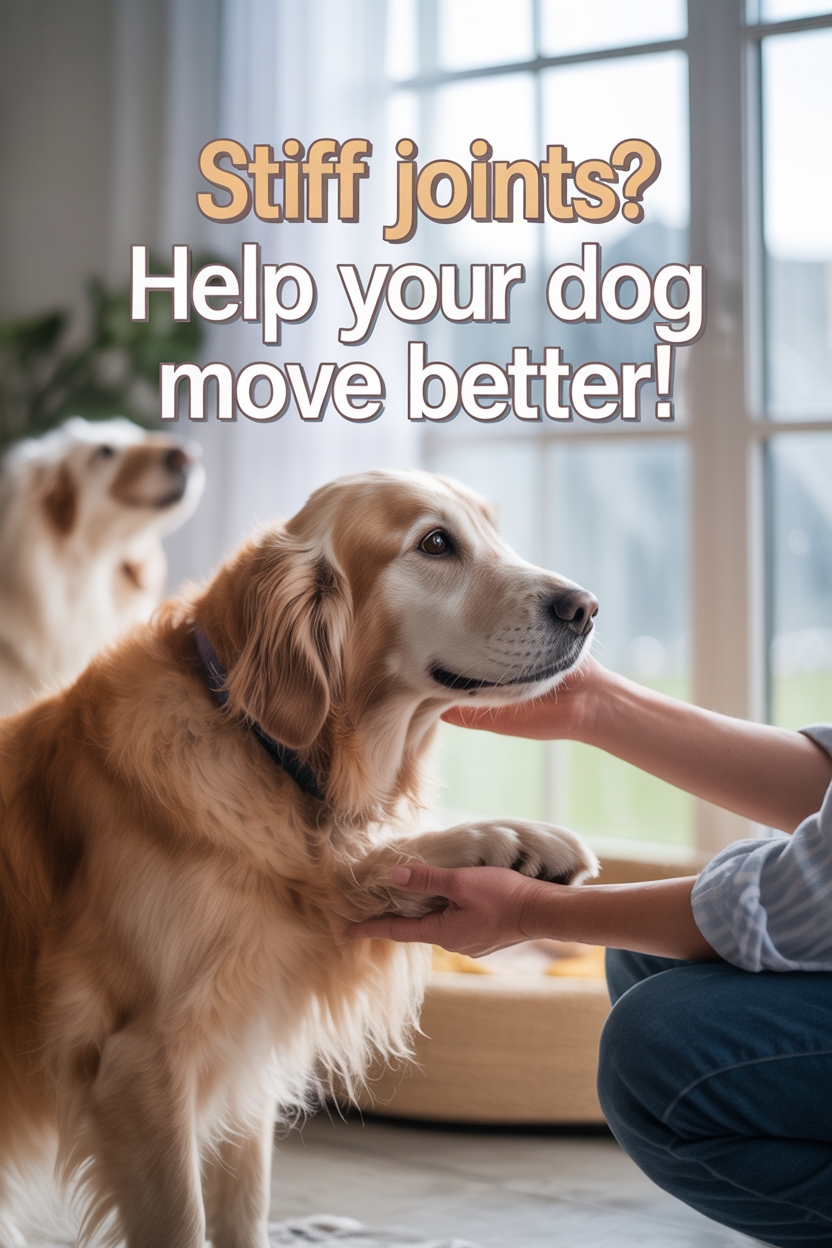
Watching our four-legged friends slow down with age hits right in the feels. When our once bouncy pups start giving us the “Do I HAVE to get up?” look, arthritis might be the culprit behind those creaky joints. While your vet should absolutely be your primary resource, there’s a wealth of home remedies that can help your pup move from constant discomfort to improved mobility.
Canine arthritis – or osteoarthritis – affects about 20% of adult dogs. Catching these symptoms early means you can start supportive care sooner! Watch for:
- Reluctance to climb stairs
- Stiffness when getting up, especially in the morning
- Developing a limp or altered gait
- Swollen joints
- Unusual posture or standing position
- Pain response when certain areas are touched
- Decreased interest in play or activity
- Difficulty rising from a lying position
These symptoms typically develop gradually, making them easy to miss until they become more pronounced.
How Arthritis Impacts Your Dog’s Quality of Life
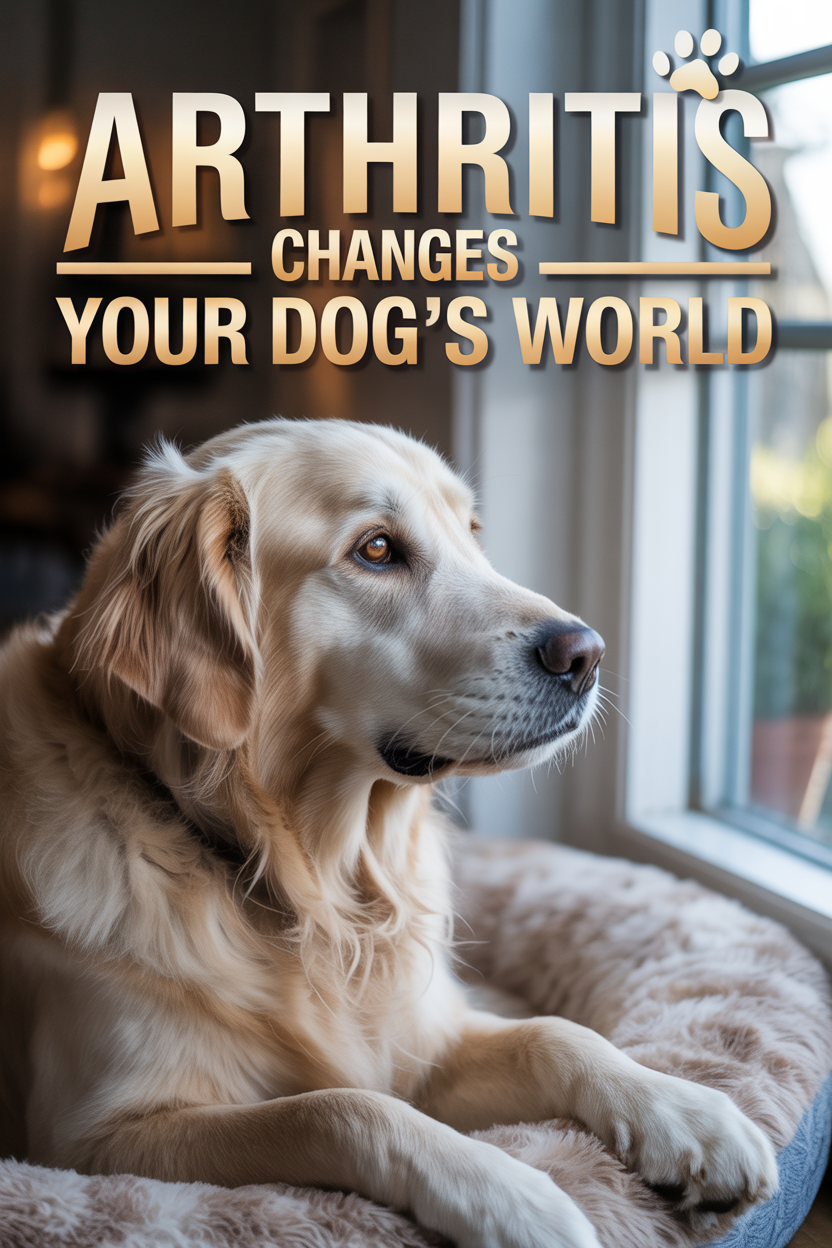
Arthritis isn’t just physical pain—it affects your dog’s entire lifestyle. Activities that once brought joy—fetching balls, hiking trails, or even neighborhood walks—can suddenly become uncomfortable or painful.
This persistent discomfort can lead to:
- Social withdrawal from both humans and other pets
- Mental understimulation due to decreased activity
- Sleep disturbances
- Weight gain as exercise decreases
- Secondary health issues related to reduced mobility
- Changes in temperament or mood
Understanding these broader effects highlights why having effective home remedies for dog arthritis is essential for maintaining your best friend’s quality of life.
The Science Behind Joint Pain: What’s Happening in Your Dog’s Body

Understanding the biological processes behind arthritis helps explain why certain remedies work. Arthritis develops when the protective cartilage in your dog’s joints deteriorates, resulting in:
- Bone-on-bone contact causing friction and pain
- Inflammatory responses that increase discomfort
- Reduced joint fluid effectiveness
- Formation of bone spurs
- Muscle tension developing around painful areas
Natural arthritis treatments typically target these mechanisms—reducing inflammation, supporting remaining cartilage, improving joint lubrication, blocking pain signals, or relaxing tense muscles. This explains why a multi-faceted approach often yields the best results.
Creating a Comfortable Environment for Your Arthritic Dog

Your home setup can significantly impact an arthritic dog’s comfort. A few thoughtful modifications can make a tremendous difference:
- Invest in an orthopedic bed that provides proper joint support
- Create a warm, draft-free resting area
- Consider a pet-safe heating pad on the lowest setting
- Provide multiple bedding options with varying firmness
- Relocate sleeping areas to minimize stair use
- Maintain a comfortable ambient temperature
- Place comfortable resting spots throughout your home
Don’t be concerned if your dog occasionally prefers a hard surface—many arthritic dogs sometimes seek firm support when certain positions provide relief.
Weight Management: The Most Powerful Home Remedy
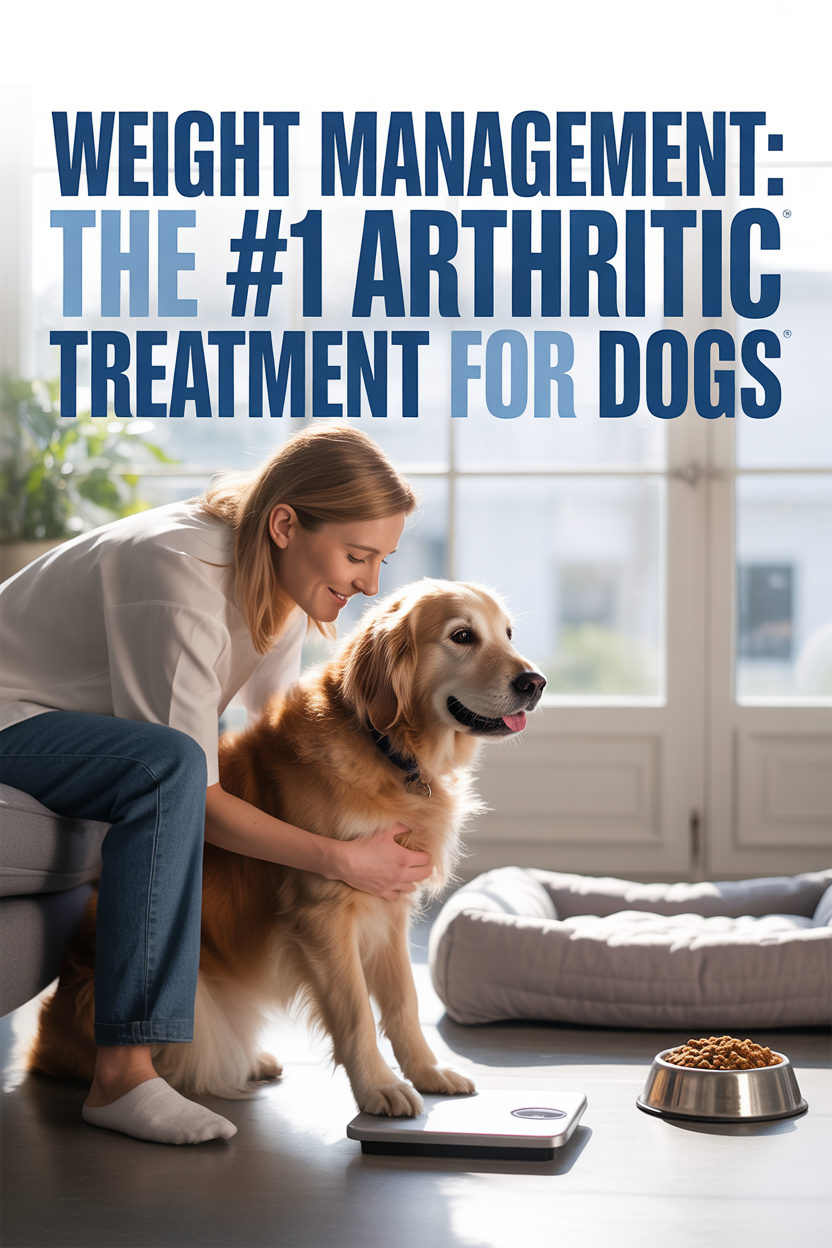
Maintaining your dog at a healthy weight is perhaps the single most effective arthritis management strategy. Extra pounds significantly increase stress on already painful joints.
Research shows that even modest weight loss can substantially improve mobility. Here’s how to help your dog maintain a healthy weight:
- Use a kitchen scale for precise portion control
- Replace high-calorie treats with vegetables
- Establish consistent feeding rules with all household members
- Consider therapeutic weight management food
- Try smaller, more frequent meals to boost metabolism
- Use puzzle feeders to slow consumption and provide mental stimulation
- Track weight regularly to monitor progress
Always partner with your veterinarian on weight loss plans—rapid weight loss can create additional health problems.
Joint-Friendly Exercise Options

Contrary to what might seem intuitive, appropriate exercise is essential for arthritic dogs. The right kinds of movement maintain muscle strength, improve circulation to damaged areas, and prevent joint stiffness.
These low-impact activities are generally well-tolerated:
- Short walks on soft surfaces like grass rather than concrete
- Controlled leash walking at a comfortable pace
- Swimming or water therapy for non-weight-bearing exercise
- Gentle range-of-motion exercises
- Indoor games that avoid jumping or sudden movements
- Gradual incline walking to build supporting muscles
The key principle is consistency with gentle movement rather than occasional intense activity. Multiple brief sessions throughout the day often work better than one longer period of exercise.
Massage Techniques for Pain Relief

Regular massage can improve circulation to affected joints, relax tense muscles, and strengthen your bond. Here’s a simple approach to canine massage therapy:
Effleurage: Use your flat hand to make long, gentle sweeping motions along muscle groups, applying very light pressure.
Gentle kneading: Use your thumbs to make small circular motions around (not directly on) painful joints, being mindful of your dog’s comfort level.
Passive range of motion: Gently move limbs through their comfortable range without forcing any movement that causes discomfort.
Compression: Apply gentle pressure with your palm over large muscle areas to improve circulation.
Always observe your dog’s reaction and stop if they show signs of discomfort. Short evening sessions when they’re already relaxed often yield the best results.
Temperature Therapy for Joint Comfort
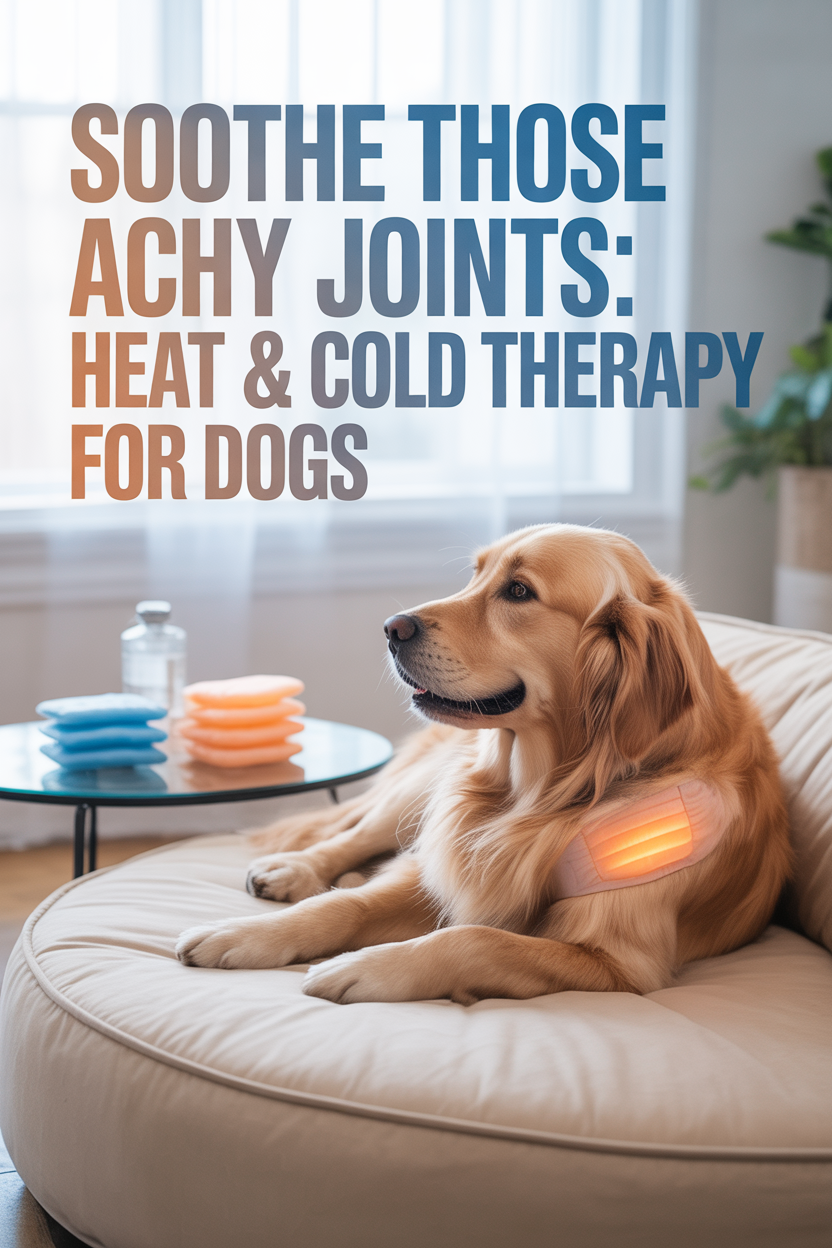
Heat and cold treatments can provide significant relief for arthritic pain without medication:
Heat therapy increases blood flow and relaxes muscles—ideal for morning stiffness or chronic pain:
- Warm towels wrapped around affected joints
- Pet-safe heating pads on low settings
- Homemade rice bags warmed in the microwave
- Warm water bottles wrapped in thin towels
Cold therapy reduces inflammation—best for acute flare-ups or after unusual activity:
- Frozen vegetables wrapped in a thin towel
- Commercial pet gel packs
- Cool, damp washcloths
- Cooling gel mats for resting areas
Never apply ice directly to your dog’s skin, and always monitor them during treatment. Many dogs benefit from alternating between heat and cold depending on their specific symptoms.
Natural Anti-inflammatory Supplements

Several natural supplements show promise for reducing inflammation and supporting joint health:
Turmeric (curcumin): This spice contains compounds that fight inflammation through pathways similar to conventional medications. Here’s a simple recipe for “golden paste”:
- 1/4 cup organic turmeric powder
- 1/2 teaspoon freshly ground black pepper (improves absorption)
- 1/4 cup virgin coconut oil
- 1-2 cups filtered water
Mix and simmer until it reaches a paste-like consistency. Start with about 1/4 teaspoon daily for small dogs, working up to a teaspoon for larger breeds. Results typically appear after several weeks of consistent use.
Omega-3 fatty acids: These essential fats help moderate inflammatory responses. Look for dog-specific supplements derived from cold-water fish sources like salmon, sardine, or krill.
Boswellia serrata: This frankincense extract appears to inhibit inflammatory compounds that damage cartilage and cause pain.
Introduce supplements gradually to allow your dog’s system to adjust and to monitor for any adverse reactions.
Joint Support Supplements: What Works?

Glucosamine and chondroitin are popular joint supplements with varying degrees of scientific support:
Glucosamine provides building blocks for cartilage repair and may slow deterioration. It’s not a pain reliever, so immediate results shouldn’t be expected.
Chondroitin helps cartilage retain water and elasticity while potentially inhibiting enzymes that break down cartilage. It often works synergistically with glucosamine.
Research shows mixed results, with these supplements appearing most beneficial for:
- Early-stage arthritis when significant cartilage remains
- Prevention in predisposed breeds
- Complementing other treatment approaches
- Maintenance therapy following more intensive treatments
Choose products formulated specifically for dogs with appropriate weight-based dosing. Additional ingredients like MSM or green-lipped mussel extract may provide enhanced benefits. Be patient, as improvements typically take weeks to become apparent.
CBD Oil for Pain Management
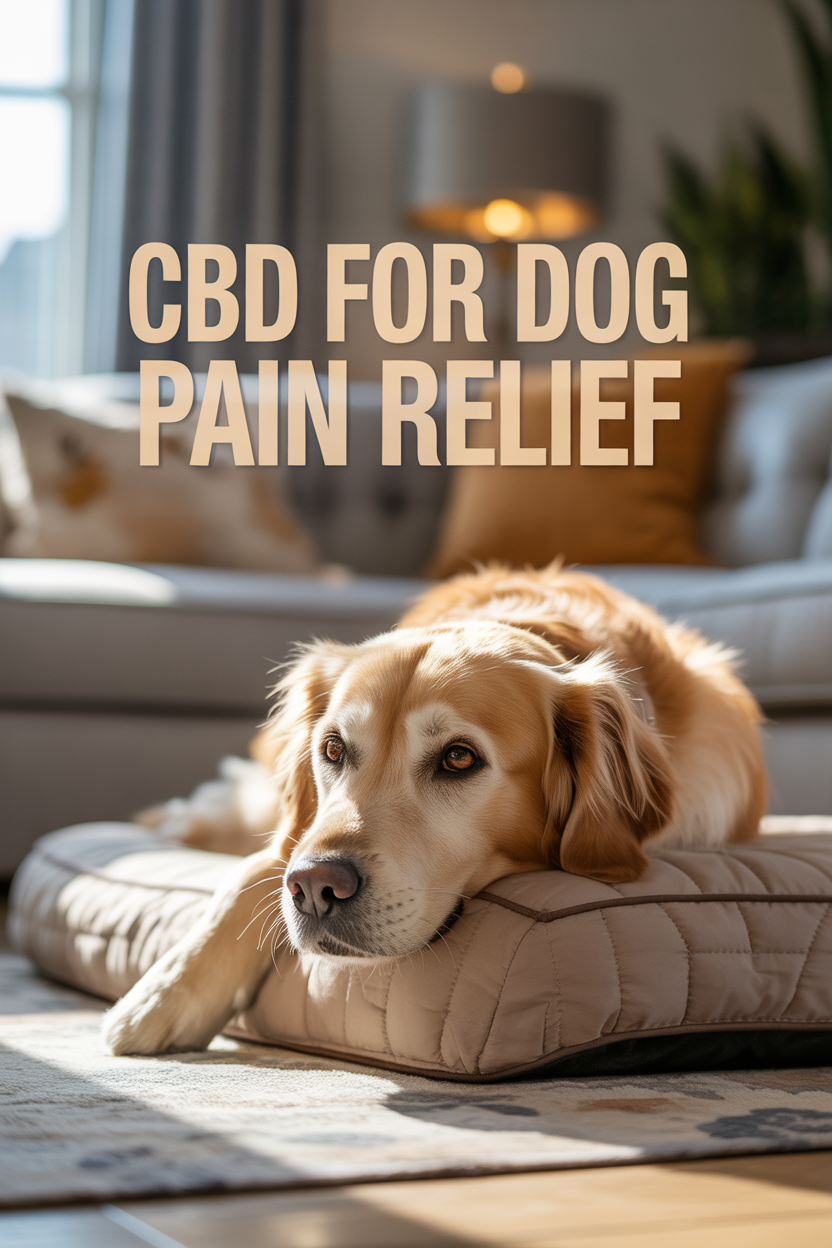
CBD (cannabidiol) has gained popularity for managing arthritis symptoms in dogs. Research suggests several potential benefits:
- Interaction with the endocannabinoid system to modulate pain signals
- Anti-inflammatory properties that may reduce joint inflammation
- Possible improvement in both pain perception and underlying inflammation
- Variable individual response patterns
If considering CBD for your arthritic dog:
- Choose products specifically formulated for pets
- Verify third-party testing through certificates of analysis
- Begin with the lowest recommended dose
- Administer directly or mixed with food
- Monitor for side effects like sedation or increased thirst
- Maintain consistent dosing schedules
Be aware of local regulations regarding CBD products, and always consult your veterinarian, especially if your dog takes other medications.
Homemade Topical Treatments
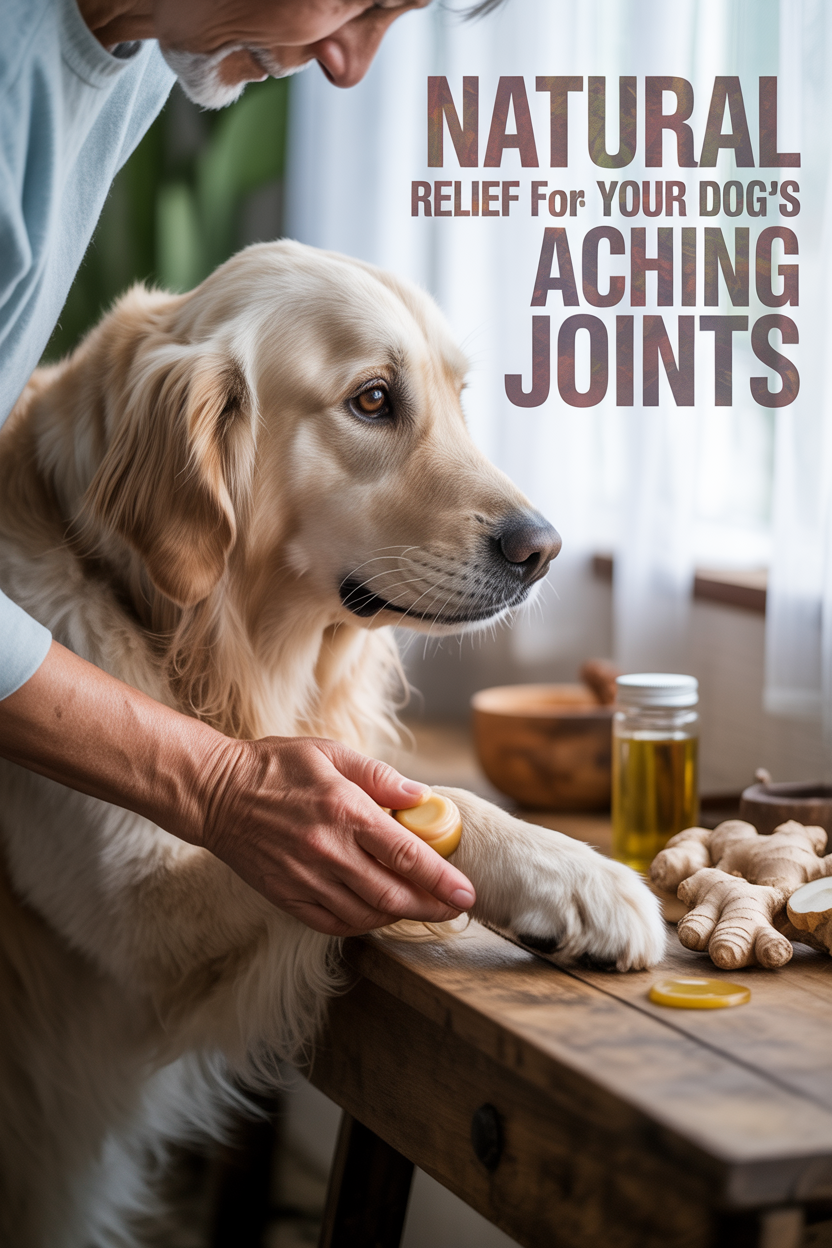
These DIY topical remedies can provide localized relief for painful joints:
Comfrey Compress:
- Steep 2 tablespoons dried comfrey leaves in 2 cups hot water
- Strain and allow to cool to a comfortable temperature
- Apply the soaked cloth to affected joints for 10 minutes
- Use once or twice daily for temporary relief
Ginger and Aloe Rub:
- Combine 1 tablespoon freshly grated ginger with 2 tablespoons pure aloe vera gel
- Apply a thin layer to affected areas, avoiding spots your dog might lick
- Allow to remain for 15-20 minutes before gently removing
- Use no more than once daily during painful episodes
Arnica and Coconut Oil Blend:
- Mix 1/4 cup virgin coconut oil with 10 drops of arnica oil
- Massage gently into affected areas using circular motions
- Follow with a warm compress to enhance absorption
- Store remaining mixture for future use
Always test natural remedies on a small area first to check for sensitivity, and never apply to broken skin.
Acupressure Points for Pain Relief
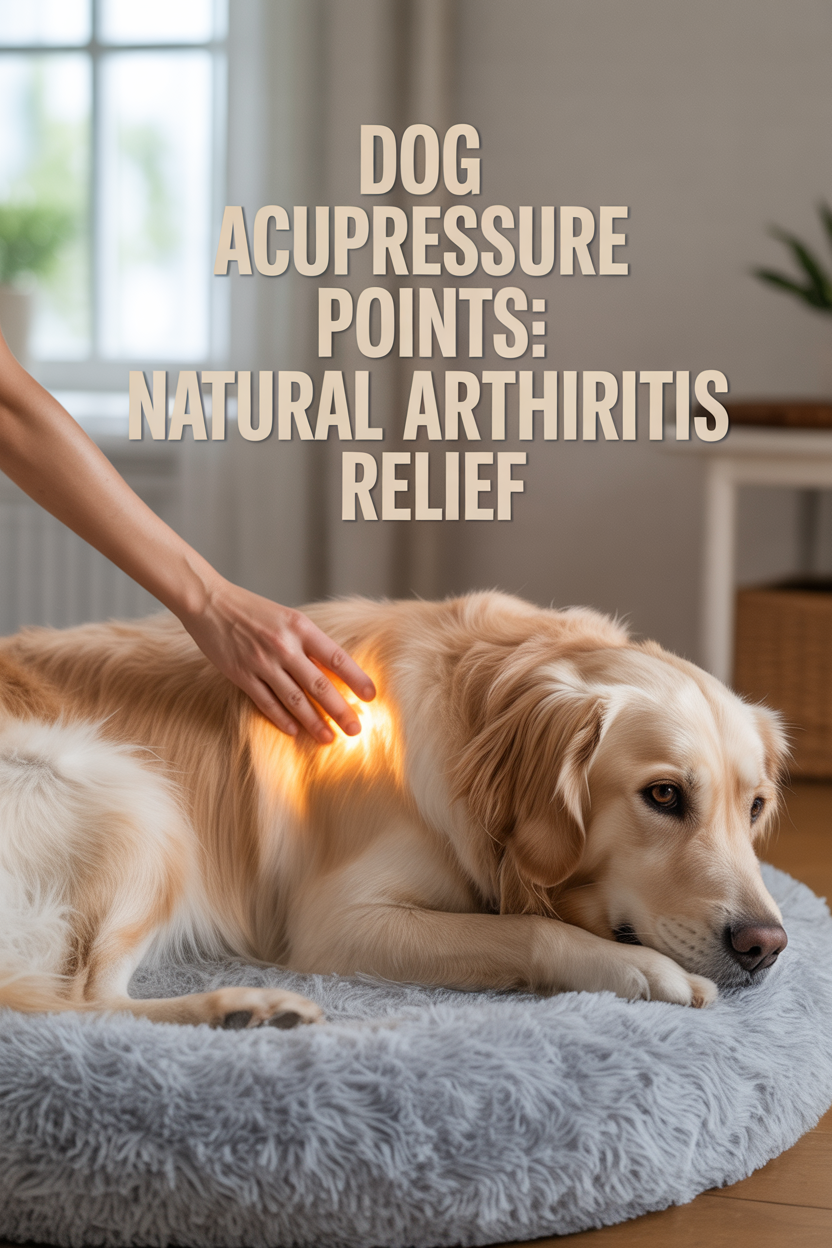
Acupressure applies gentle pressure to specific points that can help manage pain without needles. These traditional Chinese medicine techniques can be performed at home:
- Bai Hui point: Located at the junction where the tail meets the back. Apply gentle pressure for 1-2 minutes to help with back and hip discomfort.
- GB 29 and GB 30: Found in the hip area, these points can improve hip mobility and reduce pain.
- LI 4: Located in the webbing between the “thumb” and first toe on front paws. This point helps modulate pain signals throughout the body.
- BL 60: Found in the depression behind the outer ankle bone on rear legs. Particularly helpful for hind-end mobility issues.
- ST 36: Located below the knee on the outer side of the hind leg, this point supports overall energy and vitality.
Apply firm but gentle pressure with your thumb for 1-2 minutes per point, watching for signs of relaxation. Regular short sessions typically yield better results than occasional longer treatments.
Home Modifications for Better Mobility

Strategic changes to your living environment can dramatically improve your arthritic dog’s ability to navigate daily life:
- Non-slip surfaces: Add rugs, yoga mats, or carpet runners over slippery flooring to prevent falls and provide secure footing
- Ramps and steps: Install carpeted ramps with gentle inclines for furniture and vehicle access
- Elevated feeding stations: Raise food and water bowls to a height that minimizes neck strain
- Safety gates: Block access to hazardous areas like stairs when supervision isn’t possible
- Support harnesses: Consider rear-support systems for dogs with significant mobility challenges
- Consolidated living spaces: Create areas where essentials are easily accessible without excessive movement
- Threshold ramps: Add small ramps to smooth transitions between rooms with different floor heights
These modifications help maintain your dog’s independence and dignity while providing necessary assistance. Even minor adjustments can significantly impact comfort and mobility.
When to Seek Veterinary Care

While home remedies can be extremely beneficial, they have limitations. Consult your veterinarian in these situations:
- Sudden severe decrease in mobility or willingness to move
- No improvement after consistent application of home remedies
- Development of new symptoms like fever or significantly swollen joints
- Decreased appetite or refusal to eat
- Continued decline in mobility despite home care
- Adverse reactions to supplements or treatments
- Progressive worsening of symptoms despite intervention
Your veterinarian may recommend prescription anti-inflammatories, professional physical therapy, advanced treatments like platelet-rich plasma, or surgical interventions that can complement your home care efforts.
The most effective approach to managing canine arthritis typically combines veterinary guidance with dedicated home care. This comprehensive strategy addresses both the medical aspects and quality-of-life components of arthritis management.
By consistently implementing these home remedies while maintaining veterinary oversight, you can help improve your dog’s comfort and mobility. With patience, appropriate care, and the right combination of treatments, many arthritic dogs maintain good quality of life and continue enjoying their favorite activities with modifications.






